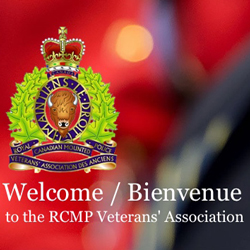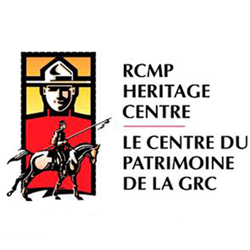1960 – “Depot” Division: Past And Present
While going through his old Force papers, Veteran Ric Hall came across an information booklet published by the RCMP in 1960 and with the title of “Depot Division Past And Present.”
We have included the details and photographs from the booklet for your reading pleasure.
On May 23, 1873, an Act was passed by the Canadian Parliament creating the North-West Mounted Police, whose chief task would be to establish law and order in the vast unsettled territory extending from the Manitoba boundary to the Rockies.
The following year the Force built Fort Macleod, in what is now southern Alberta, and in 1876 it became the Headquarters of the Force. In 1878, Headquartered moved to Fort Walsh near the United States boundary, in what was to become the Province of Saskatchewan, and four years later, 1882, it was moved to Regina. In 1904, the prefix “Royal” was bestowed on the Force by King Edward VII, in recognition of its services; and in 1920 the title was changed to Royal Canadian Mounted Police, and Headquarters was transferred to Ottawa.
Regina, however, unlike its predecessors Fort Macleod and Fort Walsh did not wane as a base of police operations but continued to grow until today it is the largest of R.C.M. Police establishments. It is the site of “Depot” Division which, as the Western Training Centre, receives hundreds of recruits each year and of the Headquarters of “F” Division, which is responsible for the enforcement of Federal and Provincial laws and the Criminal Code in the rural areas and certain municipalities of Saskatchewan.
In 1882, the selection of Regina, or ‘The-Pile-of-Bones‘ as it was then known, as the site of Headquarters, portable buildings were shipped in sections from Eastern Canada and erected according to plans laid out by Inspector S.B. Steele. They enclosed a large barrack square which today, despite the replacement of all the building except the Chapel, retains its original location.
Over the past few years, an extensive building program has resulted in a new riding school, crime detection laboratory and barracks, garage and extension, swimming pool, gymnasium, hospital, and power plant. The last of the old barrack buildings disappeared when “B” Block was dismantled in 1956, vastly altering the appearance of the square.
“A” BLOCK
Administration Building
“A” Block, the administration centre of “Depot” and “F” Divisions, was built in 1912 following a fire which destroyed the original building. It contains the offices of the Officers Commanding “F” and “Depot” Divisions and their staffs, which include the Post Adjutant and Sergeant Major. At the rear of the building is the pst office and telephone switchboard. Upstairs, are the offices of the Officer in Charge “F” Division Criminal Investigation Branch and his staff. The Sergeants’ Mess and quarters are located on the north side. In the basement are the Quartermaster’s Stores, and at the rear the workshop of the plumber. The Information Officer, where tourists can obtain guides, is located on the first floor of this building.
RCMP CHAPEL
The Little Chapel On The Square
Originally a canteen, the Chapel building was constructed in Eastern Canada and moved in sections, by flat-cars, steamer, and ox-cart, to Regina, where it was assembled in 1885. In 1894 it was converted into a place of worship at the suggestion of Mrs. L.W. Herchmer, wife of the fourthCommissioner of the Force. Through the years, changes and improvements have been made in its appearance. Much of the work has been done by members of the Force. Th strong gray tower was designed and constructed by the staff of “Depot” Division, and on December 10, 1939, dedicated to the Glory of God and in loving memory of the officer and men who participated in the “March West” of 1874, from the Dufferin Camp in Manitoba to the foot-hills of the Rocky Mountains in Alberta. Pulpit, choir seats and benches are also the work of the Mounted Police personnel.
From inside the doors and looking toward the altar and Reredos, one sees the beautiful stained glass windows on either side of them. The window on the right portrays a trumpeter of the Force sounding “Reveille” – symbolic of the Resurrection – and underneath the quotation “For The Trumpet Shall Sound.” The one of the left bears the figure of a Constable of the Force in Review Order, standing in the attitude of mourning with carbine reversed. Beneath is the quotation “Blessed Are They That Mourn.” These window were the gift of the Maritime Provinces Association of Regina, and at the top of each are the Coats of Arms of Nova Scotia, New Brunswick, and Prince Edward Island. On June 18, 1944, the windows were dedicated “to the memory of the men of Maritime birth who died while in service of the Force.”
The other two stained glass memorial windows are on either side of the Nave nearest the Chancel end of the Chapel, and are of more recent origin. Plans for their installation were first announced by the Commissioner – then S.T. Wood, GMC – in 1947. The windows were to commemorate the members and ex-members of the Force, and the sons of members and ex-members of the Force, who hd paid the supreme sacrifice in World War II. One was to be installed from public funds; the other was to be purchased through the donations of the families who had suffered bereavement during the war. Design of the windows was Gothic, and this eventually led to some delay in their installation when it was decided to alter all windows in the Chapel to the classic form.
By 1949, the alterations were complete and the windows were ready for shipping to Regina. Another delay in the plans occurred when an inspection of the Chapel building by officials of the Department of Public Works revealed that certain repairs to the structure were imperative. The renovation and installation of windows was completed two years later, and the two memorial were dedicated and unveiled on November 4, 1951. The Right Reverend E.H. Knowles, LL.B, D.D., FRGS, Chaplin of the RCMP conducted the dedication service, assisted by the Very Reverend Dean W. Cole, D.D., E.D., Assistant Chaplain.
The windows are known as “The Resurrection” and “The Nativity.” The former, on the west side of the Chapel, is dedicated “To the Glory of God and in memory of members and ex-members of the Force who gave their lives in the Second Great War.” Facing it, from the east side of the building, “The Nativity” is dedicated “To the Glory of God and in memory of the sons of members and ex-members who gave their lives in the Second Great War.”
In the Sanctuary is a chair used at the Coronation of Their Majesties, King George VI and Queen Elizabeth by the Dowager Marchioness of Reading, GBE, and given by her to the Chapel. Of the Altar furnishings, the Cross was a gift from he Right Reverent and Honourable A.J. Anton, first Bishop of Qu’Appelle; vases, by the officers and members of the Force and by Sgt. B.G. Metric; the brass candlesticks by Dr. J.E. Little hales, in memory of his mother; the brass boo-rest by Bishop Knowles; and the brass alter rails by officers and members of the Force.
The lectern was carved by Gerald Spring-Rice of Pense, afterwards British Ambassador to Washington, U.S.A. The flags, hanging on either side of the chancel, flew over Fort Walsh between 1875 and 1880 and were presented by Mrs. Cora McGannon, daughter of the late Supt. J.M. Walsh, one of the original officers of the NWMP. At the entrance of the Nave stands the Font, presented by the parents of Cpl. W.H.T. Lowry, who died of wounds received in action at Cut Knife Hill during the North-West Rebellion of 1885. Several memorial tablets cover the walls on either side of the Nave.
On April 27, 1941, a fine new Hammond electric organ was presented to the Chapel by the Robert Simpson Co. Ltd., with Mrs. C.L. Burton, president of the company, officiating. Bishop Knowles conducted the dedication service.
On May 25, 1939, His Majesty King George VI, Honorary Commissioner of the Force, and Her Majesty Queen Elizabeth, visited the Chapel and expressed great interest in the Memorial Windows and Tablets.
On April 23, 1941, the Governor-General of Canada, the eEarl of Athlone, and Her Royal Highness Princess Alice, visited the Chapel. His Excellency manifested much interest in the Tablet in memory of Inspector Church, whose he knew intimately in his old regiment, The Horse Guards.
On October 17, 1951, Her Royal Highness Princess Elizabeth and Her Royal Consort, the Duke of Edinburgh, visited the Chapel. The Princess remarked “It was my mother’s wish that I should note the Memorial Windows behind the Altar,” and took particular interest in them and in the Fitzgerald Memorial.
On June 3, 1956, a lengthy association was terminated when Bishop E.H. Knowles, D.D., LL.B., FRGS, conducted his last service as Senior Chaplain of the Force, and tendered his resignation to the Commissioner. The post has since been filled by the appointment of the Right Reverent M.E. Colman, D.D., Bishop of Qu’Appelle.
OLD “C” BLOCK
To the east of the Chapel is “C” Block which was built in 1919 and served for many years as a barracks. Today only the main floor is used, and it provides office accommodation for the Divisional Personnel Officer and his staff, and for “F” Division.
East of old “C” Block is a duplex in which reside the Sergeant Major and the Quartermaster.
At the south-east corner of the Square is the Crime Detection Laboratory which was build in 1951-53. The corner stone of the new building was laid by Commissioner L.H. Nicholson, M.B.E., (Rtd) on July 25, 1951, following which the ceremonial trowel was placed in the “Depot” Division Museum.
CRIME LABORATORY
The work of the laboratory is divided among several sections, each having its own specific function. The chemistry and physics section are concerned, for the most part, with the analysis of body organs for the presence of toxic substances including alcohol. In addition, paint, glass, safe insulation material, petroleum products, etc…, are also examined. Up-to-date instrumentation is used to supplement and confirm chemical findings.
Other sections are concerned with serological examinations, handwriting and typewriting comparisons, identification of hair and fibres, firearms identification, tool marks, restoration of serial numbers and photography.
The laboratory staff consists of 21 qualified technicians who are members of the Force and of whom the majority have university training. The laboratory is used as an aid in the detection of crime in the four western provinces, the Yukon, and Western Arctic regions. Although operated by the Royal Canadian Mounted Police, its services are available to all accredited law-enforcement agencies in Canada.
On the second floor of the laboratory building, the radio and teletype equipment of “F” Division is housed.
THE BARRACKS SQUARE
On the east and north side of the Barrack Square, re the residences of the Officers Commanding “F” and “Depot” Divisions, and other officers of the Divisions. The new Officers’ Mess is situated on the north-east corner of the Square. The establishment of a NWMP Officers’ Mess in Regina was originally sanctioned in 1886. The first Mess was located din a small building on the east side of the Square but in 1912 was moved into a three-story building formerly the Commissioner’s residence. This Mess was torn down and replaced by the present building, which was officially opened in April 1959. The new Officers’ Mess is a fully-modern, two story building.
Another new building, on the west side of the Square, is “B” Block, which was completed in May 1958. This large “U”-shaped building contains six 32-men barrack rooms and nine singe rooms, and several spacious lecture and other rooms.
Also on the Square between “A” Block and the new “B” Block, is the Memorial Tablet, bearing the names of those members of the Force who have given their lives in the performance of their duties.
On September 15, 1950, the Honourable J.M. Ulrich, Lieutenant-Governor of Saskatchewan, unveiled a monument commemorating the voyage of the RCMP Arctic patrol vessel St. Roch through the fabled North-West Passage, from the Pacific to the Atlantic. The voyage began on June 23, 1940, and was completed on October 8, 1942. Sergeant (now Superintendent) H.A. Larsen, Commander of the St. Roch, was present at the unveiling. In 1944, the vessel made a return voyage through the Passage and later, in travelling from Vancouver to Halifax via the Panama Canal, became the first ship to circumnavigate the continent of North America. The St. Roch terminated her service on October 12, 1954, when she sailed into Vancouver Harbour on her return trip from Halifax. There, she became a part of the Vancouver Centennial Maritime Museum, situated on the foreshore of Haddon Park in Kitsilano Park area of Vancouver, where she is being preserved for history.
The two nine-pounder field guns standing not he Barracks Square were turned over to the Force by “A” Battery Royal Canadian Artillery, in 1886, when the Battery returned to the east following the North-West Rebellion.
NEW “C” BLOCK
Built in 1953-54, this new block provides accommodation for 180 men, and includes lecture and study rooms, the Museum, recreation room and recreation facilities, and a canteen. The men’s quarters range in size from single staff rooms to two and six-man rooms. Each member has a private clothes cupboard, chest of drawers, and writing desk. In the basement is the Corporals’ Mess.
RCMP MUSEUM
Housed in a large room situated on the second floor in the south-east corner of New “C” Block, is the RCMP Museum. This Museum was established in 1933, and has steadily grown through the years into an interesting collection of exhibits vividly depicting the history of the Force. Arranged in such a manner as to tell the visitor a sequential and comprehensive story of the Force’s interesting and colourful early history, the display commences at the north-west side of the Museum entrance.
The first show-case contains uniforms of the late Superintendent A.H. Griesbach the first man to enrol in the Force and the first Sergeant-Major in the NWMP. In another show-case along the west wall is the uniform of the late Superintendent J.M. Walsh, an officer reputed for his tact and courage – the man who negotiated with the Sioux Chief Sitting Bull in 1877. In still another show-case is the uniform of the late Inspector John French, the organizer of the famous “French’s Scouts” during the North-West Rebellion.
Also on the west wall is a map of the route taken by the North-West Mounted Police on their famous 781 mile march from fort Dufferin (now Emerson, Man.) to the Belly River in the shadow of the Rockies.
There are 12 paintings by an ex-member of the Force, Reg. No. 3305, Constable G.E. McElroy, depicting scenes at Fort Walsh, Fort Calgary, Fort Whoop-up, and Banff. Some sketches by Henri Julian, who accompanied the westward march in 1874, are also on exhibit. The portraits of all 11 Commissioners of the Force are arranged in the sequence in which they held office.
One show-case is devoted to relics of the tragic Dawson Patrol including a photostatic copy of the last entry in Inspector F.J. Fitzgerald’s dairy, which was written with charred wood and read as follows:
“All money in despatch bag and bank, clothes, etc., I leave to my dearly beloved Mother, Mrs. John Fitzgerald, Halifax. God Bless All.
F.J. Fitzgerald, RNWMP.”
Other show-cases contain exhibits recalling the Great Bear Lake part; the hunt for Albert Johnson, known as the “Mad Trapper” of Rat River, and other more recent cases in which members of the Force lost their lives in the line of duty.
There is a model of the RCMP Schooner, St. Roch, and souvenirs of her voyage through the North-West Passage. There are also models of RCMP Headquarters at Lethbridge, Alta., and Fredericton, N.B.
In contrast to World War II mementos, a collection of saddles and firearms originally used by the Force, a number of weapons and other exhibits captured from criminals, there is a fascinating display of Indian silk and bead-work and Eskimo culture.
The successful development of the RCMP Museum is a tribute to the generosity and co-operation of the many members and ex-members, their relatives and friends, as well as the pubic generally who, by their kind donations, have made this excellent display possible.
GYMNASIUM AND SWIMMING POOL
The Gymnasium was but in 1937-38 and has facilities for physical training and indoor sports. In the basement is a rifle range which can accommodate eight marksmen at ranges of from ten to twenty-five yards.
Swimming Pool
The pool was built as an addition to the Gymnasium was the Swimming Pool which measures 90 feet x 40 feet. Swimming instruction is an important feature of recruit training and awards are given to those attaining the standards set by the Royal Life Saving Society. A spectators’ gallery enables visitors to witness the training procedure.
DRILL HALL
The Old Riding School
This building was erected in 1929 to replace the old Riding School which was destroyed by fire in 1920. It was converted into a drill hall following completion of the new Riding School and a wood floor and acoustic tile ceiling were installed.
NEW RIDING SCHOOL
Built in 19953, this building has accommodation for 70 horses and includes an exercise ring, tack rooms, and forage space. The school is staffed by a Riding Master and his assistants. A gallery at the East end of the building provides visitors with a view of activities in the school.
“D” BLOCK
This building was constructed in 1936. Its ground floor contains the workshop of the Post carpenters, painters, saddler and electrician. On the second floor there is a tailor shop and the Technical Officer’s office.
RCMP CEMETERY
The Cemetery is situated at the north-west outskirts of the Barracks grounds. Entrance is by way of a wright-iron gateway and in the foreground an old seven-pounder Kaff cannon rests on a carriage with large wooden wheels.
Time and the weather has obliterated the lettering on the older wooden markers and on some of the headstones, and many of the simple crosses bear only the inscription “Rest in Peace.” The graves they mark may not be those of members of the Force, but undoubtedly they are relics of frontier days and may even antedate the grave of Constable W. Armstrong, NWMP, whose burial in the cemetery in 1884 was the first recorded in “Depot” Division files. Intermingled, in many instances, with the graves of members of the Force, are those of their wives and children.
A visit to the Cemetery would be well worthwhile for any person interested in absorbing some of the history recorded in this final resting place of so many members of the Force.


 March 31, 2015
March 31, 2015 













